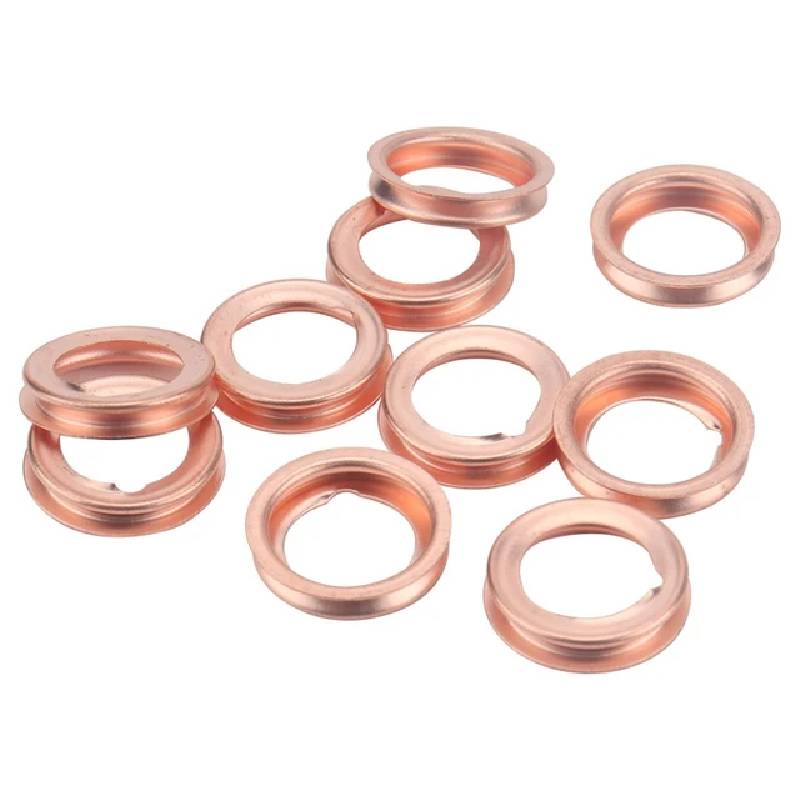An Overview of Different Types and Applications of Oil Seals in Engineering
Understanding Oil Seal Types A Comprehensive Overview
Oil seals, also known as grease seals or fluid seals, play a crucial role in various mechanical applications. They are designed to contain lubricants while preventing contaminants from entering the machinery. This dual function is vital for ensuring the longevity and efficiency of equipment ranging from engines to industrial machinery. Understanding the different types of oil seals is essential for maintenance professionals, engineers, and anyone involved in machinery upkeep.
Types of Oil Seals
1. Lip Seals This is the most common type of oil seal. Lip seals consist of a flexible lip that makes contact with the shaft and a body that holds the spring in place. They are highly effective in preventing leakage and can accommodate small misalignments between the shaft and the housing. Lip seals are excellent for static and dynamic applications but need an adequate sealing surface to function effectively.
2. Rotary Seals Specifically designed for rotating shafts, rotary seals are essentially a variation of lip seals. They are engineered to handle dynamic conditions where the shaft is constantly in motion. Rotary seals typically have additional features, such as reinforced springs and fabric-reinforced rubber to withstand higher speeds and pressures. They are ideal in automotive engines, pumps, and motors.
3. Flat Seals These seals are used in applications where there is a risk of leakage between two flat surfaces. Flat seals can be made from various materials, including rubber, cork, and metal. They are often employed in the automotive industry for valve covers and oil pans, providing a reliable barrier against oil leakage.
4. O-Rings An O-ring is a circular sealing element that fits into a groove between two parts. They are commonly made of rubber or silicone and are widely used in various applications due to their versatility. When compressed, O-rings create a seal that prevents fluid escape and contamination. They are often utilized in automotive, aerospace, and industrial applications.
oil seal types

5. Cam Profile Seals These seals have a unique design that allows them to maintain pressure and accommodate movement, making them popular in applications that experience performance fluctuations. They are similar to lip seals but offer enhanced sealing capabilities and are used in automotive engines, where they can withstand high temperatures and chemical exposure.
6. Bearing Seals These seals specifically protect rolling element bearings, keeping lubricants in and contaminants out. Bearing seals can be either metallic or non-metallic and are crucial for the longevity of the bearings in motors and machinery. Their design helps maintain proper lubrication while minimizing friction during operation.
Materials Used in Oil Seals
The material choice for oil seals is critical for performance. Common materials include
- Nitrile Rubber (NBR) Known for its excellent resistance to oils and fuels, NBR is often used in automotive applications. - Fluoroelastomer (FKM) This material provides exceptional chemical resistance, making it ideal for more aggressive environments. - Polyurethane (PU) Known for its abrasion resistance and durability, PU is often used in high-load applications.
Conclusion
Understanding the different types of oil seals and their applications is essential for ensuring the efficiency and longevity of mechanical systems. Whether you are maintaining industrial equipment or automotive engines, selecting the correct oil seal type can prevent costly leaks and failures. The right oil seal not only protects machinery but also enhances overall performance, making it a critical consideration in any engineering or maintenance task. Proper knowledge of seal types, materials, and their applications empowers technicians and engineers to make informed decisions, ultimately leading to more reliable and efficient operations.
-
The Ultimate Guide to Boat Propeller Bearings and Trailer Wheel Bearings
News Jul.31,2025
-
The Essential Guide to Marine Bearings and Boat Trailer Wheel Bearings
News Jul.31,2025
-
The Complete Guide to Heavy Duty Seals: Protecting Doors and Spaces Efficiently
News Jul.31,2025
-
Essential Guide to Marine Shaft Bearings and Boat Trailer Axle Bearings
News Jul.31,2025
-
Comprehensive Guide to Marine and Trailer Bearings for Safe Boating and Transport
News Jul.31,2025
-
Comprehensive Guide to Automotive Oil Seals: Protecting Your Engine and Shafts
News Jul.31,2025
-
Understanding Automotive Oil Seals: Essential Components for Engine and Shaft Protection
News Jul.30,2025
Products categories















